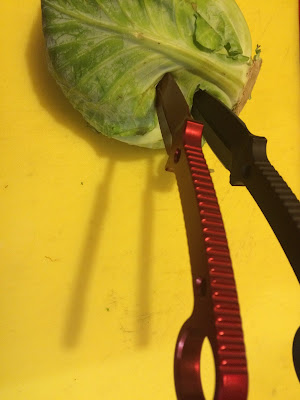This is the Snugpak® Stratosphere and it is the picture of functional, elegant simplicity. That's saying a lot, right off the bat, but it really impressed me. It is, essentially a waterproof over-bag for a sleeping bag, with a supported canopy to provide space around your head and shoulders.
The whole package is enclosed in a roll-and clip-top dry-bag type stuff-sack, with two additional webbing straps and buckles to cinch it in tight, it packs down to a mere 31cm x 14cm (12" x 6") and all told weighs only 1.13kg (2.49lbs).
 The bundle contains two drawstring bags, one for the 7 aluminium alloy Y-stakes, and one for the two collapsible 8.5mm aluminium poles. as well as the uni-body bivvy itself.
The bundle contains two drawstring bags, one for the 7 aluminium alloy Y-stakes, and one for the two collapsible 8.5mm aluminium poles. as well as the uni-body bivvy itself. The bivvy upper is constructed of a 50D 190T 100% nylon ripstop cordura with (5000mm HH) waterproof polyurethane coating. All seams being fully waterproofed and taped, the upper meets the bathtub style 210T 100% Cordura nylon with (8000mm HH) waterproof polyurethane coating. This combination makes for a very dry sleep, even in very exposed locations.
 |
Pegging the bivvy out at each toe end corner, shoulder and head end flaps, as well as the back flap makes for a very secure and stable structure. It sits very low to the ground, offering a very slight weather silhouette.
When fully staked out the bivvy has a footprint of 220cm (87") length x shoulder width of 70cm (28") x feet-end width of 60cm (24") x and is 48cm (19") tall at the hood.
The bivvy has a 3/4 length zipper, which extends all the way up and over the lip of the hood to seal the whole unit off from weather or bugs. As well as the storm flapped zipper, it also has 5 hook and loop strips for rapid egress in case of emergency or contact. You obviously compromise the water-proofing of the bivvy by not zipping it up but it's a trade-off you can choose to make.
The hood canopy is stand alone stable and provides a shady nook to rest ones eyes in without the need to zip up at all. The fabric of the bivvy is soft and not very crinkly, making it comfortable to lay in without a lot of distracting noise. The back side of the hood features a No-See-Um Mesh Mosquito Net window, under the flap, which provides sheltered venting to reduce breath condensation from building up. In good weather the flap can be rolled up and stowed with toggle loops.
The front of the hood can be zipped up all the way to the left corner for complete enclosure or left open to the elements. If left zipped up there is a hidden feature, a backwards zippable mesh face window, for added ventilation or visibility without creeping intruders. It rolls up out of the way when not in use.
 |
| face window opened |
 |
| rear window open, flap rolled up |
 Inside the hood there is a surprising amount of room, plenty enough to sit up on your elbows to read or even wrestle yourself in and out of sleeping bag or change clothes. The roof of the hood has a mesh pocket built into it, plenty big enough to slip a tablet, phone glasses or even a small light.
Inside the hood there is a surprising amount of room, plenty enough to sit up on your elbows to read or even wrestle yourself in and out of sleeping bag or change clothes. The roof of the hood has a mesh pocket built into it, plenty big enough to slip a tablet, phone glasses or even a small light. Getting in and out of the bivvy is easy, once you get past the hood lip zipper, which can be a little awkward to get around the corner. It is super quick to put up, pegging the feet out, feeding the poles and pegging out the back takes just minutes. The end result is a sleep system that is elegant, robust and reliable.
After a couple of trial set-ups, Tactical-Baby said they wanted to try it out overnight, so with just a yoga mat ,a sleeping bag and a couple of fleece blankies. Despite an overnight of 15C (60F) and spotty raining throughout the night (enough to leave pools on the upper surface they were remarkably comfortable and slept well past dawn.
Given its small packed-size and light weight I wouldn't hesitate in either recommending it or strapping it to my own pack if there was even the possibility of needing to overnight trail-side. With its low profile and unobtrusive olive drab I bet you could pitch it in trailside bracken and smell passing hiker without being seen.














































